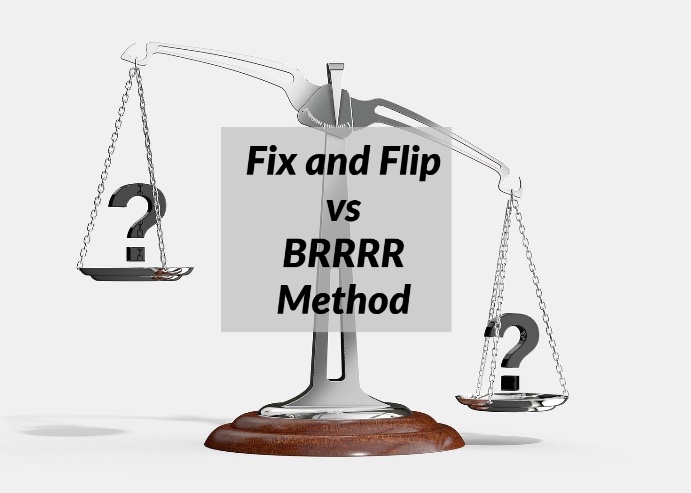Whether you are just starting out in real estate or have 25+ flips under your belt every real estate investor is faced with a strategic decision. Should they fix and flip a property or use the BRRRR Method?
Not every real estate investor has the same goals and not one strategy is optimal in every scenario. Let’s breakdown the key takeaways of each of these common strategies in today’s marketplace.
First, what is a Fix and Flip?
Fix and Flipping is purchasing a distressed or undervalued property, rehabbing (or renovating) it and then selling it for a short-term profit. This strategy generates quick cash flow in the short-term.
On average it takes an investor 6 months to complete a fix and flip. That’s why private money lenders offer short-term loans in the 3-, 6- or 12-month range.
Here are a few pros and cons of the Fix and Flip strategy to consider:
Pros
- Allows you to keep your money moving
- Avoids maintaining a property long term
- Avoids dealing with tenants
- Faster return
Cons
- Short-Term capital gains if sold within a year
- Greater risk of short-term market fluctuations
- Can’t perform a 1031 exchange
- Big risk in the rehab process (time and cost)
- Fees such as transaction costs, brokerage, financing and closing fees
Let’s now take a look at the BRRRR Method?
The initial steps of the BRRRR and Fix and Flips strategies are very similar. The BRRRR is focused on building up your portfolio of properties. BRRRR stands for Buy, Rehab, Rent, Refinance and Repeat.
Once the investor has purchased an undervalued property, they renovate it to increase the appraisal value (just like the fix and flip).
However, the investor will then use the added equity from the rehab to refinance the property. Using the excess capital from the refinance to repeat the process with another property.
Pros and Cons breakdown of the BRRRR Strategy:
Pros
- Less upfront cash
- Property will appreciate over time
- Positive cash flow from rental income
- Can withstand short term market fluctuations
- Tax benefits
- 1031 exchange
Cons
- More properties, more to manage
- Finding quality tenants
- Time and Budget Risks
- Ongoing maintenance costs
So now, how to choose the best strategy?
Start by asking yourself:
- Do you want to be a landlord?
- Would you rather store your wealth in cash or real estate?
- Are you comfortable with short-term or long-term market risks?
- Do you prefer a faster, more defined exit strategy or building passive income?

